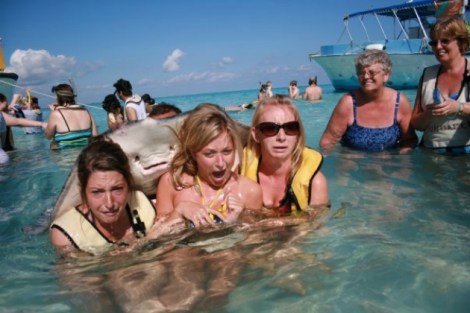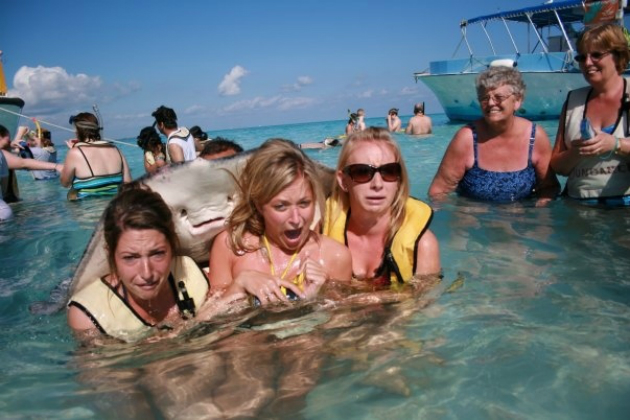
Stingray tourism is big business. In fact, in the Grand Cayman Islands, where lots of lots of people come every year to swim with stingrays, each stingray brings in about $500,000 in tourism dollars annually. That’s quite a lot of responsibility for a stingray. But they have no idea what sort of burdens they carry, and they also have no idea, probably, that tourism has changed their habits and way of life considerably.
According to scientists at Nova Southeastern University’s Guy Harvey Research Institute in Florida, who implanted stingrays with microchips to track their behavior, the stingray daily routine is “barely recognizable” compared to what it was before. For example, stingrays used to be totally nocturnal. Now they are up and at ’em during the day, waiting for the tourists, and, more importantly, the delicious squid snacks that the tourists bring. They are also way more aggressive and fight a lot more. And, in fact, the entire composition of their bodies is changing, since they used to eat a more varied diet, and now they only eat squid because tourists bring it right to their mouths.
Swimming with stingrays seems really awesome, and of course it brought the world its most epic animal photobomb (above). But if you’re a stingray, it’s really no fun. Maybe that guy was actually trying to drown the tourists to save his species.



